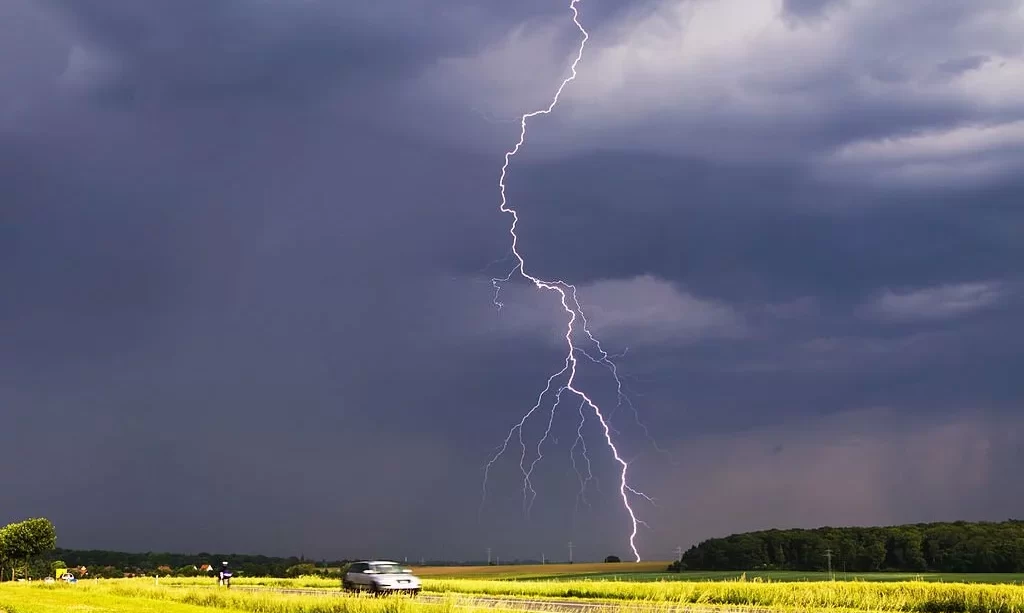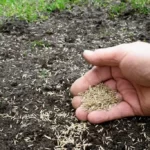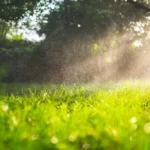The lush green expanse of a well-maintained lawn is a sight that many homeowners aspire to achieve. In this quest for greener grass, there are numerous myths and beliefs, one of which is the idea that lightning makes grass greener. This intriguing notion suggests that the electrical power of lightning has the ability to transform a lackluster lawn into a vibrant green carpet. In this article, we delve into the relationship between lightning and the verdant color of grass, seeking to uncover the scientific basis behind this concept. While the idea of lightning’s influence on grass has persisted, we will explore the primary factors that contribute to grass greening, separating fact from fiction in the quest for the perfect lawn.
- You don’t have to worry about streaks, stripes, or accidentally burning your lawn when you use Milorganite fertilizer!
- Milorganite contains virtually no salts, so it won’t burn your lawn, trees, shrubs, or plants, even in the hottest temperatures or driest conditions.
- Milorganite’s iron greens without staining. Grass needs iron for the long-lasting, deep, vibrant green lawn you want. Milorganite delivers organically complex iron throughout the feeding period and won’t stain concrete, unlike iron salts in some synthetic fertilizers.
- Milorganite’s slow-release plant food formula provides nitrogen and other nutrients for up to 8-10 weeks after application and does not need to be watered in. Covers 2,500 Sq. Ft.
- Milorganite can be safely used in lawns, flowers, shrubs, trees, and fruit and vegetable gardens, promoting strong roots and sturdier stems. It provides the nutrients every garden needs to grow the biggest and greatest abundance.
The Role of Nitrogen in Lawn Fertilization
To understand the potential connection between lightning and greener grass, it’s essential to grasp the pivotal role of nitrogen in lawn fertilization. Nitrogen is a primary nutrient that plants, including grass, require for healthy growth. It is a fundamental component of chlorophyll, the green pigment responsible for photosynthesis, the process by which plants convert light energy into chemical energy.
Nitrogen plays a critical role in promoting leafy growth, which is particularly significant for grass. Lawns with a healthy nitrogen supply tend to display lush, green blades. For this reason, many fertilizers specifically formulated for lawns are nitrogen-rich. Nitrogen fertilizers enhance grass color, stimulate new growth, and contribute to the overall health and vigor of the lawn. Lawn enthusiasts often apply nitrogen-based fertilizers to achieve that vibrant, emerald-green appearance that is so coveted in landscaping.
Understanding the importance of nitrogen in lawn care sets the stage for exploring the intriguing relationship between lightning and grass greening. While nitrogen is undeniably vital for grass, the role of lightning in this process may not be as straightforward as it seems.
Lightning and Nitrogen Fixation
The idea that lightning can make grass greener is rooted in the concept of nitrogen fixation. Nitrogen, a crucial component of grass health, is abundant in the Earth’s atmosphere, primarily in the form of dinitrogen gas (N2). However, atmospheric nitrogen is not directly usable by most plants, including grass. This is where the intriguing role of lightning comes into play.
Lightning, with its powerful electrical discharges, can trigger a fascinating natural process known as lightning-induced nitrogen fixation. During a lightning strike, the intense heat and energy cause the N2 molecules in the air to split into individual nitrogen atoms. These highly reactive nitrogen atoms can then combine with oxygen to form nitrogen oxides (NOx), particularly nitrogen dioxide (NO2).
Rainfall following a lightning storm washes these nitrogen oxides from the air to the ground, where they can be absorbed by the soil. In the soil, certain bacteria and microorganisms can convert these nitrogen oxides into forms of nitrogen that plants can utilize, primarily nitrate (NO3-) and ammonium (NH4+). Grass, as a plant, can then take up these nitrogen compounds through its roots and use them to support growth and enhance its green color.
Factors Affecting Grass Health
While nitrogen is undeniably essential for grass health and greenery, it’s crucial to acknowledge that multiple factors influence the well-being and appearance of a lawn. Grass health is not solely determined by nitrogen availability. Other key factors that play a role in the greening and overall health of grass include:
- Soil Quality: The composition, pH, and nutrient content of the soil significantly impact grass health. Proper soil testing and amendments can enhance the conditions for grass growth.
- Watering Practices: Adequate and consistent watering is critical for grass health. Overwatering or underwatering can lead to stress and affect the grass’s color and vitality.
- Mowing Techniques: Proper mowing practices, including the height and frequency of mowing, can impact grass health. Mowing too low or too frequently can weaken the grass.
- Weed and Pest Control: The presence of weeds and pests can compete with grass for nutrients and space, affecting its appearance and health.
- Sunlight Exposure: The amount of sunlight a lawn receives also influences its color and growth. Some grass species require more sunlight than others.
It’s important to recognize that while lightning-induced nitrogen fixation can contribute to nitrogen availability, it is just one element in the complex interplay of factors that determine grass health. Relying solely on lightning for lawn fertilization is impractical and unpredictable. Therefore, the greening of grass involves a combination of these factors, along with appropriate lawn care practices.
- TRIPLE ACTION FORMULA: Feed your lawn on all 3 levels- grass, roots, and soil
- 3 MONTH PROTECTION: Improves turf nutrition for up to 3 months
- MICRO-FEED ACTION: Micro-Feed Action improves nutrient uptake during and between feedings to fortify roots and increase resistance to heat and drought
- COVERAGE AREA: Treats up to 5,000 square feet
- RESTRICTIONS: Not for sale in HI
The Reality of Lightning and Greener Grass
The intriguing concept that lightning can make grass greener is grounded in scientific truth. Lightning-induced nitrogen fixation, with its ability to convert atmospheric nitrogen into forms that grass can utilize, contributes to the nutrient supply of grass and may enhance its green color. However, the reality of this phenomenon is far from the simple belief that a single lightning strike can transform a lackluster lawn into a lush paradise.
The process of lightning-induced nitrogen fixation is a complex, variable, and unpredictable event. It relies on factors such as the frequency of lightning storms, local atmospheric conditions, and the presence of suitable microorganisms in the soil to convert nitrogen oxides into plant-available forms. Therefore, relying on lightning alone for lawn fertilization is impractical, if not unrealistic.
Conclusion
The relationship between lightning and greener grass, while rooted in scientific principles, is a subtle one. While lightning can contribute to nitrogen availability, it is just one piece of the puzzle that determines grass health and color. Grass health is influenced by a multitude of factors, including soil quality, watering practices, mowing techniques, weed and pest control, and sunlight exposure.
In the quest for greener grass, gardeners should rely on more predictable and controllable practices, such as proper fertilization, soil testing, and irrigation. By understanding the nuanced interplay of these factors and employing sound lawn care practices, it is possible to achieve the vibrant, lush lawn that so many aspire to have. The reality of greener grass involves comprehensive care, rather than hoping for a lightning strike to work its magic.






